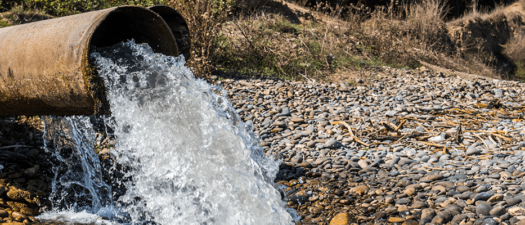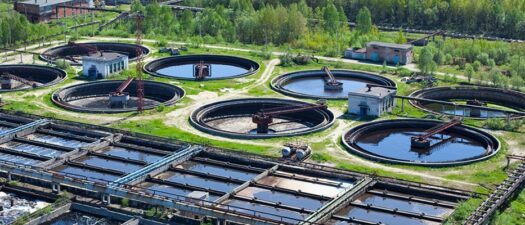Our last few blog posts have looked at the challenges facing owners/operators of industrial plants – increasing reuse of process water, as well as better management and reduction of effluent discharge.
Desalination or Greywater Reclamation – Making the Right Choice

Few, if any, countries have the luxury of unlimited water resources. For many countries, water resources are becoming increasingly limited in both quantity and quality. Human water consumption has increased beyond sustainable levels in many regions, resulting in depletion of natural water sources, and lower quality water in drinking water reservoirs, including groundwater systems.
There is an ongoing debate about the advantages of treating greywater for reclamation versus desalination of saline water, mostly seawater. This discussion is, of course, moot if you don’t live on, or close to the coast, but for purposes of this blog, we will assume that both options are viable for all its readers.
To start us all off on the same page, let’s define the terms:
What is Greywater and How Can It be Used?
Greywater is wastewater – mainly municipal from households or office buildings – that does not contain human waste, and that is diverted and sometimes treated for reuse in landscaping, some agriculture, and household use other than drinking water, eg. for flushing toilets.
What is Water Desalination?
Water desalination is the removal of salts and dissolved solids from saline water (brackish or seawater).
 For many countries, water resources are becoming increasingly limited in both quantity and quality
For many countries, water resources are becoming increasingly limited in both quantity and quality
Technology Water Treatment Options
IDE has a range of technologies in its water treatment portfolio that can be implemented for reclaiming greywater, as well as for desalinating saline water. We offer technologies that provide the lowest water prices, meet discharge regulations, are environmentally friendly, and can achieve water quality that meets, and is even sometimes superior, to existing potable water standards. These water treatment technologies include thermal and membrane water desalination, and unique wastewater treatment technologies – the MaxH2O line of technologies – that comply with relevant regulations and standards for potable use and for discharge.
The Benefits of Using Reclaimed Greywater
The key issues in the water treatment debate concern energy consumption, water quality, and environmental impacts. Three main perceived benefits of using reclaimed greywater have been identified – cost savings, the positive effect on the environment, and the nutritional value of reclaimed water. The latter is beyond the scope of this blog, and will not be addressed.
Both options are valid, and there are advantages inherent in both.
Reverse osmosis (RO) is a technology commonly used for both greywater treatment and desalination. Therefore, this lends itself to direct comparison and is what we will look at more closely, although this is in no way an invalidation of other technologies.
Energy Requirements of Water Treatment
Energy constitutes a large portion of the cost of water provision, and as such is a prime driver of decisions about water and wastewater treatment technology. Generally, the more advanced the treatment and the further it is transported, the more energy is required to supply water. Other cost factors include pretreatment, chemicals, cleaning, maintenance, and capital works.
Depending on the nature of the water to be treated, energy requirements differ. For example, the amount of total dissolved solids (TDS) to be removed from seawater is considerably higher than that of municipal wastewater – generally above 35 g/L compared with 0.1-1 g/L in municipal wastewater. The higher TDS, the more energy is required to supply the necessary pressure to remove these. The energy component is considered to be between 50% (Dawoud, 2005) and 44% (Hinkebein and Price, 2005) of the cost of desalinating water. Seawater desalination requires four times higher feed pressure, and higher feed flow compared to reuse. Dreizin (2006) describes greywater reclamation and brackish water desalination as incurring very similar costs.
<< Contact one of our experts to ensure you meet these criteria >>
Environmental Implications
The most obvious consequences of water treatment, whether desalination or grey water reclamation, include energy and associated CO2 emissions, and changes in environmental flows and wastewater discharge, with associated impacts on habitats, fauna, and flora. Three main categories of environmental impacts are recognized – energy consumption, waste production, and other impacts.
- Energy Consumption and related greenhouse gas emissions, as well as air pollution due to desalination, are high for greywater reclamation and desalination and need to be reduced.
- Waste production and discharge/treatment (such as cleaning effluents and brines/concentrates) affect both the economics and the environmental impact of desalination. IDE offers chemical-free technologies that minimize these effects and also act to minimize brine – MaxH2O, biological pretreatment, and ZLD technologies.
- Others – these impacts include land use, particularly in regions where real estate is in short supply, visual impact, air pollution to surrounding neighborhoods, etc.
<< Contact one of our experts >>
Pros and Cons of Desalination vs. Greywater Reclamation
There are pros and cons to desalination and greywater reclamation, and both are valid options. We must evaluate the best option based on the concerns and requirements of each case.
| PROs | Cons | |
|---|---|---|
| Seawater Desalination | Cost effective | Regulatory challenges in implementing intake and outfall |
| More mature technologies to address better known challenges | Energy guzzler - though more advanced technologies are reducing the energy consumption | |
| Well known water chemistry | ||
| Sustainability - there will always be seawater to desalinate | ||
| Grey Water Reclamation | Cost savings - lower energy consumption | Operational challenges due to tendency for scaling and biofouling |
| Positive effect on the environment | Public acceptance | |
| Nutritional 19 value of reclaimed water (not address in the scope of this blog) | Challenges in achieving high recovery processes |
Thoughts to Take Home
In summary, reuse is more energy-efficient than seawater desalination but poses other treatment challenges. It requires more complex – i.e., more expensive – technologies have greater potential for scaling and biofouling than seawater and have higher maintenance costs.
IDE offers a range of technologies to treat all water types – seawater, brackish, and greywater. These include MaxH2O Desalter and MaxH20 PFRO, state-of-the-art RO, and robust pretreatment technologies to address challenging feed water, whether the source is seawater or greywater. Treated greywater is generally preferred for landscaping, certain types of agriculture, and non-consumable household use, and still bears some stigma with regard to potable water, although the potable water quality can be reached. Seawater is commonly used for potable water – some 70% of Israel’s drinking water started out in the sea – as well as process water for industry.
| Parameter | Seawater Desalination | Grey Water Reclamation |
|---|---|---|
| Product Water Quality | RO can treat both seawater and watsewater to a quality higher than required for most water applications. | RO can treat both seawater and watsewater to a quality higher than required for most water applications. |
| Energy Consumption | 3-3.4 kWh/m3 | 0.4-1.0 kWh/m3 |
| Note: Water recycling and brackish water desalination incur similar costs. | ||
| Scaling potential | Greater in grey water | |
| Biofouling potential | Much greater in grey water |
For the reasons above, seawater is considered a simpler solution. However, if you don’t live close to the sea, but have a source of greywater, do not despair – IDE will help you meet your water needs by treating this source. In short, whatever your water supply challenges are, contact IDE Technologies for solutions!

















